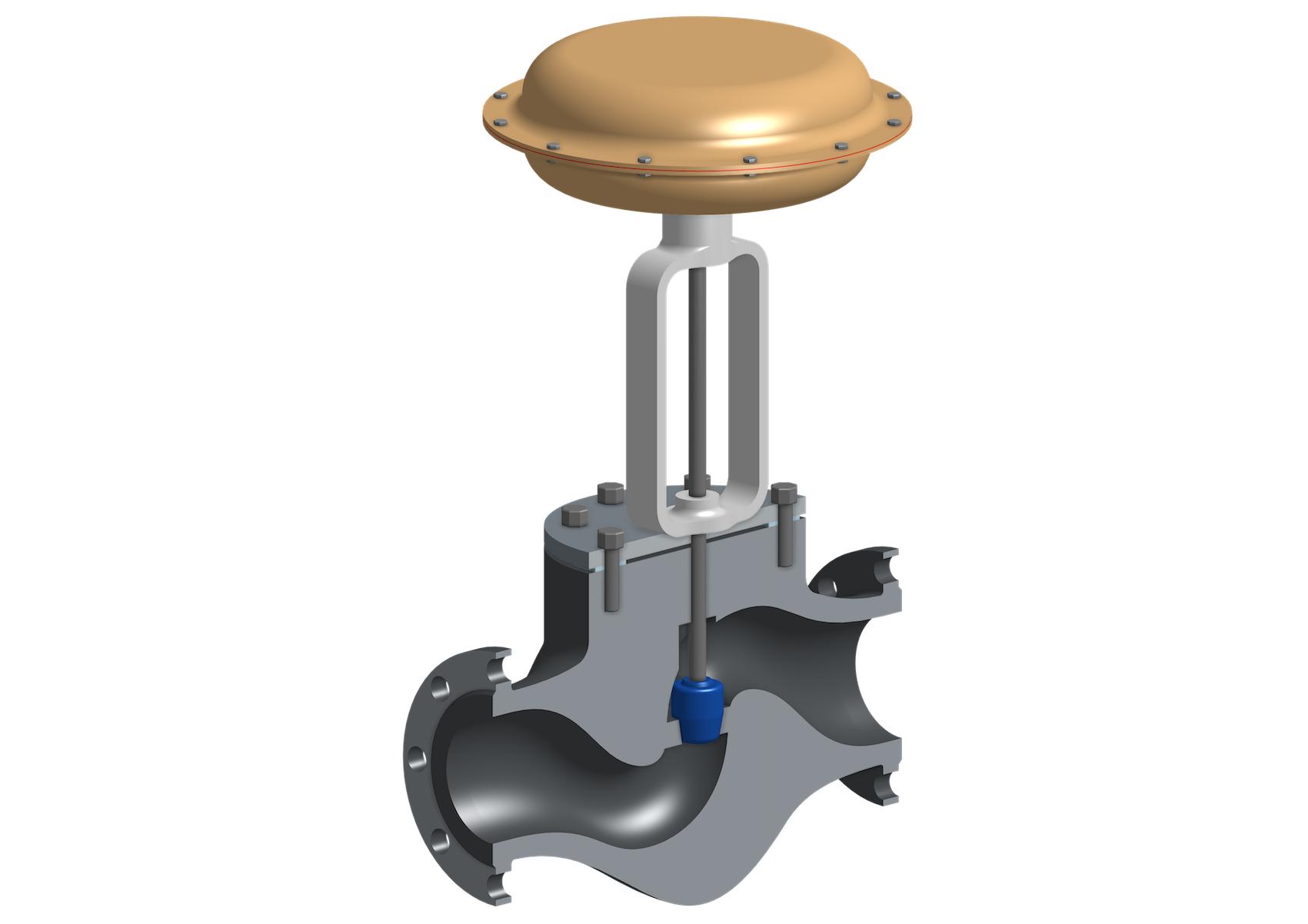Control Valves

Control valves are used within process plants to govern the course of selected process values by adjusting the flow rate of gaseous or liquid process media. Basically, any process value which is influenced by the flow rate of a process media can be controlled using control valves. In many process plants, control valves are among the components most often employed for control loops and as such have a significant impact on the performance of the plant. An unsuitable, comparably inexpensive control valve with an insufficient flow capacity can have similar negative effects as a faultily sized, expensive compressor.
Kvs‑Value
The Kvs‑value quantifies the flow capacity of a control valve when it is fully open. For valve positions below the maximum possible one, the respective flow capacities are expressed by the so‑called Kv‑value (without a trailing "s"). The flow capacity of a control valve is selected to match the corresponding process conditions. The control behaviour might become unstable and inaccurate if the flow capacity is too high. If it is too low, the plant capacity might be reduced.
Valve Characteristic
The valve characteristic describes the course of the Kv‑value as a function of the valve position. Most control valves either feature a linear or an equal percent characteristic. With a linear characteristic, the Kv‑value changes proportionally with adjustments of the valve position. In case of an equal percent characteristic, the relative change of the respective Kv‑value when the valve position is adjusted remains the same along the entire range of the position of the control valve. This means that the same, absolute adjustment of the valve position results in a higher absolute change of the Kv‑value at higher valve positions than it does at lower valve positions. Which type of valve characteristic is suitable for a given control valve depends on the control authority of the valve. If the control authority is high, a linear characteristic is usually preferred in order to ensure stable control behaviour. For low control authorities, an equal percent characteristic is often more suitable.
Valve Position
The position of a control valve is adjusted by means of a valve drive, which is powered either electrically or pneumatically. Among other things, pneumatic drives have the advantage of a simple and comparably inexpensive build. A disadvantage is the additional infrastructure required, consisting of compressor system and compressed air distribution. At bigger distances, the compressed air distribution can become complex, so that in case of remotely positioned control valves an electric drive might be more suitable.
